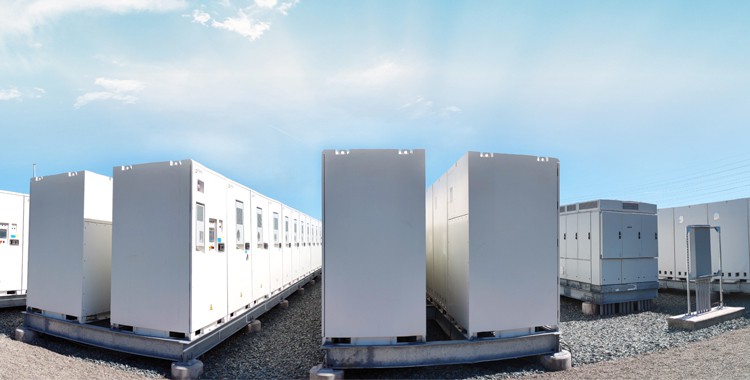The Future of Commercial and Industrial Energy Storage Systems in the U.S.: Trends, Growth Drivers & Market Outlook
As energy reliability becomes increasingly critical for businesses of all sizes, commercial and industrial (C&I) energy storage systems are emerging as indispensable assets across the U.S. market. With the convergence of rising electricity costs, growing pressure for decarbonization, and financial incentives from government policies, the adoption of energy storage in commercial and industrial settings is no longer a niche investment—it’s a strategic necessity.
In this article, we explore the current landscape, key growth drivers, and future potential of the C&I energy storage market in the United States. Whether you operate a warehouse, manufacturing plant, retail chain, or a distributed fleet of facilities, understanding the trajectory of energy storage technology could position your business for long-term operational and financial resilience.
What Are Commercial and Industrial Energy Storage Systems?
Before diving into market forecasts, it’s important to clarify what C&I energy storage actually entails. These systems are designed to store electrical energy—typically using lithium-ion or other advanced battery technologies—for use during peak hours, outages, or periods of high demand.
While often discussed together, commercial and industrial energy storage systems can vary widely in scale and function. For example, a grocery store chain may implement a small-scale storage system to reduce demand charges, whereas a steel plant may require a large-scale installation capable of balancing heavy machinery loads and ensuring power reliability.
👉 If you’re not sure which type of system fits your facility’s profile, you might find this comparison helpful: Commercial vs. Industrial Energy Storage Systems: What’s the Difference and Which One Do You Need?
Market Size and Growth Forecasts
According to research by Wood Mackenzie and BloombergNEF, the U.S. C&I energy storage market is set to grow significantly over the next decade. Key projections include:
- Compound Annual Growth Rate (CAGR): More than 20% through 2030
- Installed Capacity: Expected to exceed 10 GW by 2030
- Primary Growth Segments: Manufacturing, logistics, retail, data centers, and healthcare
This growth is largely driven by both macro-level policy changes and micro-level operational needs, which we’ll explore next.
Why Businesses Are Turning to Energy Storage
- Cost Control and Demand Charge Management
For many commercial users, demand charges can represent up to 50% of the total electricity bill. Energy storage systems help shave these peaks by discharging stored energy during high-demand periods, lowering costs without changing business operations.
- Energy Resilience and Backup Power
With extreme weather events and grid instability becoming more frequent—especially in states like California, Texas, and Florida—businesses are seeking storage solutions to maintain uptime and avoid revenue loss during outages.
- Sustainability Goals and ESG Reporting
Corporations are under increasing pressure to meet sustainability benchmarks. On-site storage allows facilities to maximize solar energy use, reduce carbon footprints, and enhance their Environmental, Social, and Governance (ESG) scores.
- Participation in Grid Services
Advanced energy storage systems enable commercial users to participate in demand response, frequency regulation, and capacity markets, generating new revenue streams.
Government Incentives and Policy Support
The passing of the Inflation Reduction Act (IRA) has been a game changer. For the first time, standalone energy storage systems are eligible for the Investment Tax Credit (ITC), which covers up to 30% of project costs.
Other state-level programs, such as California’s SGIP, New York’s NYSERDA, and Massachusetts’ SMART, provide additional rebates or performance-based incentives for storage deployments. These incentives significantly improve the ROI of C&I energy storage investments.
Emerging Use Cases Across Industries
The versatility of C&I storage systems is evident in their adoption across diverse industries:
- Manufacturing: For smoothing heavy industrial loads, avoiding outages, and improving power quality
- Warehousing and Logistics: For backup systems supporting automated systems and lighting
- Retail Chains: For load-shifting across multiple locations and integrating rooftop solar
- Data Centers: For uninterruptible power and participation in frequency regulation markets
- Agriculture: For supporting irrigation pumps and cold storage with solar + storage systems
Want a deeper look at how different industries are applying storage? Check out this guide:
👉 Use Cases of Commercial and Industrial Energy Storage Systems
Regional Hotspots: Where the Growth Is Happening
Not all U.S. states are equal when it comes to storage adoption. The following regions are seeing the highest traction:
- California: Driven by high energy prices, strong incentives, and grid reliability concerns
- Texas: Due to extreme weather and the deregulated energy market enabling innovation
- Northeast (NY, MA, NJ): Aggressive climate goals and incentive-rich policy frameworks
- Mid-Atlantic and Midwest: Emerging markets fueled by manufacturing and logistics needs
Technology Trends Shaping the Future
🔋 Lithium-Ion Domination—but Alternatives Are Emerging
Lithium iron phosphate (LiFePO₄) remains the chemistry of choice for its balance of safety, cycle life, and cost. However, flow batteries and solid-state technologies are gaining interest, especially for long-duration storage.
📊 AI and Smart EMS Integration
Advanced energy management systems (EMS) powered by AI are helping businesses optimize charge/discharge schedules, predict demand spikes, and interact with utility programs in real time.
⚙️ Modular & Scalable Designs
Businesses are increasingly opting for modular, stackable systems that can scale with operations—starting with 100 kWh and expanding to several MWh without overhauling infrastructure.
What’s Holding Back Faster Adoption?
Despite the momentum, several hurdles remain:
- Upfront Costs: Even with incentives, initial investments can be steep for smaller businesses
- Complex Project Development: Engineering, permitting, and utility interconnection remain time-intensive
- Lack of Awareness: Many business owners are still unaware of storage benefits or financial feasibility
- Inconsistent State-Level Policies: The patchwork of local regulations can confuse potential adopters
Overcoming these barriers will require stronger education efforts, streamlined permitting processes, and broader access to financing solutions like leasing or Energy Storage-as-a-Service (ESaaS).
Final Thoughts: The C&I Storage Market Is Just Getting Started
As energy infrastructure across the U.S. faces growing strain and sustainability becomes a boardroom priority, commercial and industrial energy storage systems will move from “nice-to-have” to “non-negotiable.”
Whether your business is motivated by cost savings, carbon reduction, or operational stability, now is the time to explore how storage can fit into your energy strategy. And if you’re unsure where to start, understanding the differences between commercial and industrial systems or exploring industry-specific use cases can help clarify your path.
With federal incentives, falling battery prices, and smart controls making storage more accessible than ever, the U.S. market is entering a new phase of accelerated, widespread adoption—and businesses that move early are likely to see the greatest benefits.


